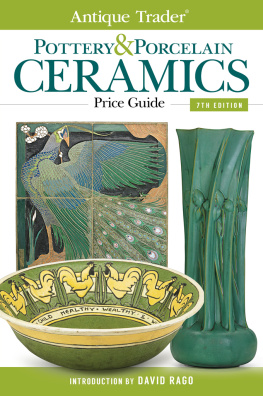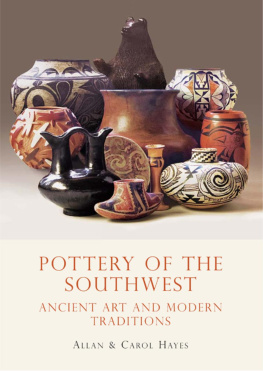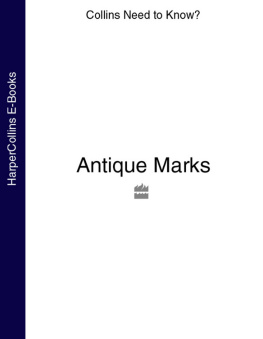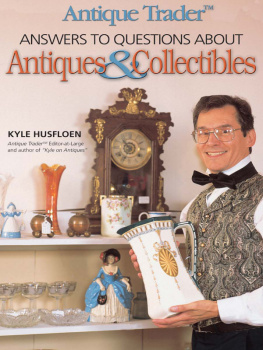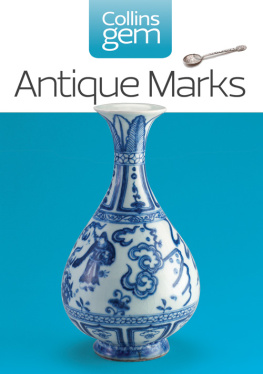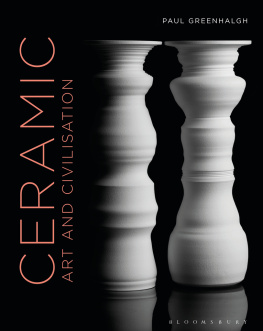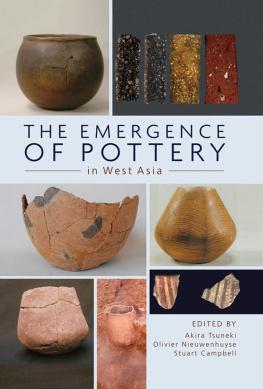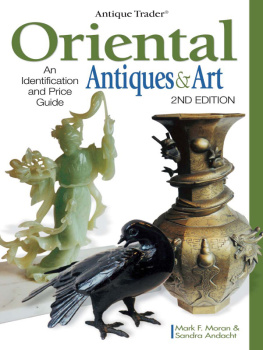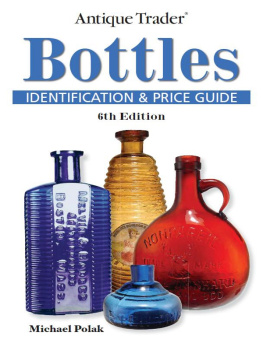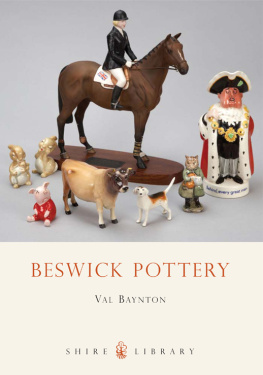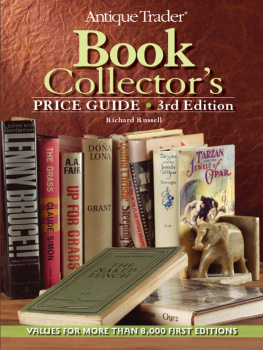Antique Trader
POTTERY & PORCELAIN
CERAMICS
Price Guide 7th edition
INTRODUCTION BY DAVID RAGO
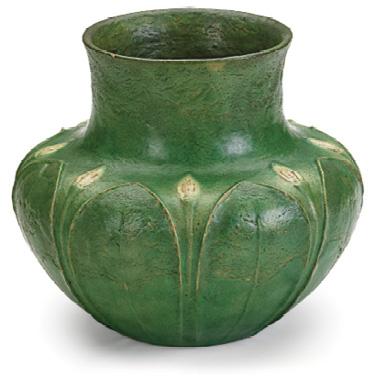
Squat vessel with leaves and buds, Boston, ca. 1905, circular pottery stamp, 7" 7-12". $6,875
Contents
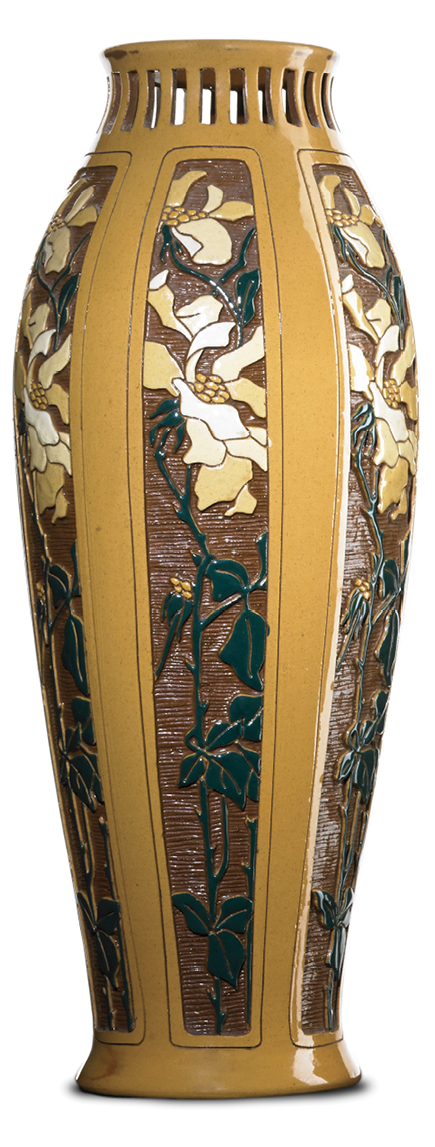
Roseville, Della Robbia vase, 15 12 6", with wild roses and cut-out rim, Zanesville, Ohio, ca. 1910 $43,750
COLLECTING TIPS
Your best friend? Education
W henever we are asked about what to collect we always stress that you should collect what you like and want to live with. Collecting is a personal matter and only you can determine what will give you the most satisfaction. With the incredible diversity of ceramics available, everyone should be able to find a topic they will enjoy studying and collecting.
No matter your passion, whether it is an entire line of Fiesta or prized piece from George Ohr, always remember that education is your best friend. It will serve you well when all else fails. To get the most from your pursuits read everything you can get your hands on, and purchase the best references available for your library. New research materials continue to become available for collectors and learning is an ongoing process.
It is also very helpful to join a collectors club where others who share your enthusiasm will support and guide your learning. Fellow collectors often become friends and sources for special treasures to add to your collection. Dealers who specialize in a ceramics category are always eager to help educate and support collectors and many times they become a mentor.
With the very ancient and complex history of ceramic wares, its easy to understand why becoming educated about your special interest is of paramount importance. There have been collectors of pottery and porcelain for centuries, and for nearly as long collectors have had to be wary of reproductions or reissues. In Chinese ceramics, for instance, it has always been considered perfectly acceptable to copy as closely as possible the style and finish of earlier ceramics and even mark them with period markings on the base. The only problem arises when a modern collector wants to determine whether their piece was produced over 200 years ago or barely a century ago.
With European and, to some extent, American wares, copying of earlier styles has also been going on for many decades. As far back as the mid-19th century, copies and adaptations of desirable early wares were finding their way onto the collector market. By the late 19th century, in particular, revivals of 18th century porcelains and even some early 19th century earthenware were available, often sold as decorative items and sometimes clearly marked. After 100 years, however, these early copies can pose a real challenge for the unwary.
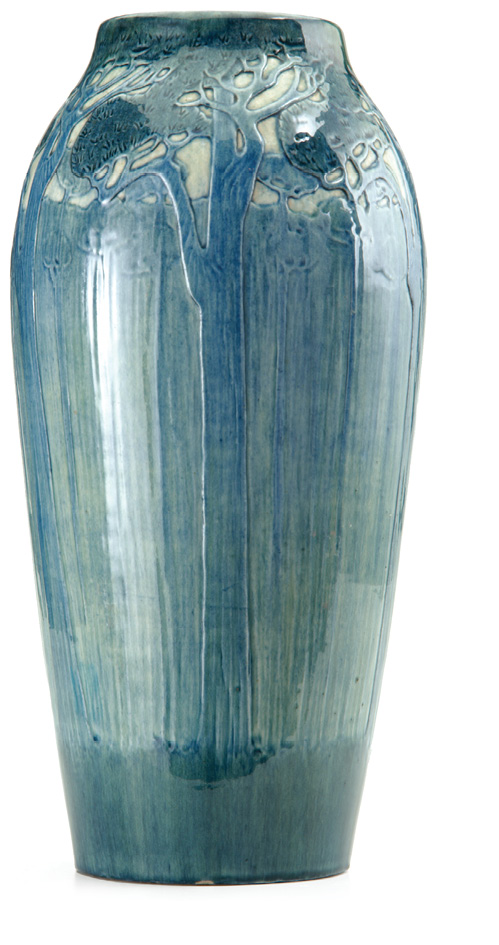
Newcomb College, tall vase, 15 14 7 12, carved by Sadie Irvine, pine trees with green needles on bright blue trunks against a blue-green and ivory ground, 1909 $96,000
Even more troublesome for collectors is the flood of reproductions produced during the past 30-40 years. Not only are high-end early wares copied even more modern, collectible wares have fallen victim to this problem. For instance, McCoy Pottery, never an expensive line, has seen a large number of copies hit the market. Cookie jars, in fact, have been one of the hardest hit areas of ceramics collectibles with not only McCoy cookie jars out there but also many of the Shawnee Pottery jars as well as some from other cookie jar makers of the past. In addition, the popular Little Red Riding Hood and other figural pieces made by Shawnee are being offered. With a little checking you can find many of these copies online. Many of the patterns made by the Roseville Pottery have also been widely reproduced in recent years. For at least 20 years porcelain pieces carrying Hand-Painted Nippon fake marks have been offered by reproduction wholesalers. When first manufactured these pieces and the misleading marks were fairly easy to identify. That has changed as more sophisticated processes are used to create much better quality reproductions with realistic markings.
Again, education is the key. Read, seek out the advice of trusted experts, and ask questions. As with anything in life, do your homework and remember its always a good idea to buy from a reliable source.
Another area that calls for special caution on the part of collectors, especially the inexperienced, is that of damaged or repaired pieces. A wise collector will always buy the best example they can find and it is a good policy to buy one extra fine piece rather than a handful of lesser examples. You never want to pass up a good buy. But, in the long run, a smaller collection of choice pieces will probably bring you more satisfaction (and financial reward) than a large collection of moderate quality.
Purchasing a damaged or clearly repaired piece is a call only you can make. Generally, we dont recommend it unless the piece is so unique that another example is not likely to come your way in the near future. For certain classes of expensive and rare ceramics, especially early pottery that has seen heavy use, a certain amount of damage may be inevitable and even acceptable. The sale price, however, should reflect this fact.
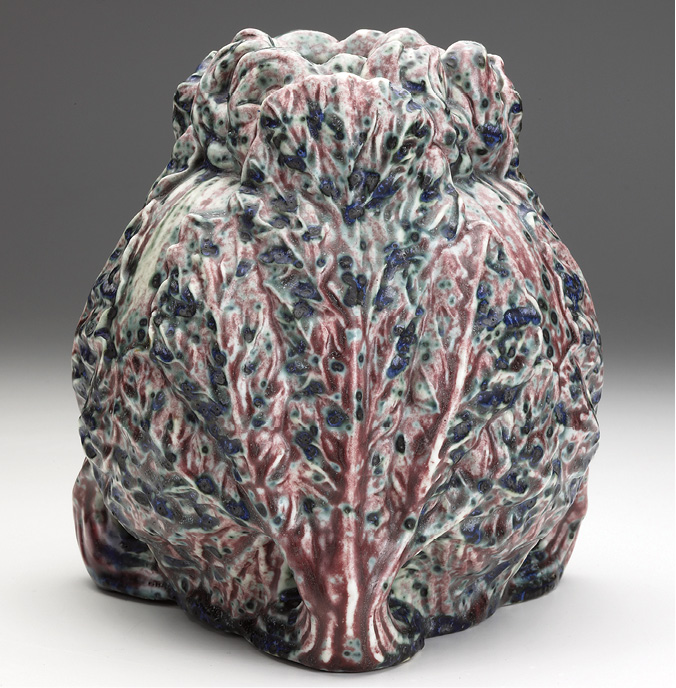
Louis Comfort Tiffany, exceptional cabbage-shaped vase, 8 12 8", in mottled polychrome matte glaze $50,020
Restoration of pottery and porcelain has been a fact of life for decades. Even in the early 19th century before good glues were available, make-do repairs were sometimes done to pieces using small metal staples. Today some collectors even seek out these quaint examples of early recycling. Since the early 20th century glue and repainting have been common methods used to mask damage to pottery and porcelain and these repairs can usually be detected today with a strong light and the naked eye.
The problem in recent decades has been the ability of restorers to completely mask any sign of previous damages using more sophisticated repair methods. There is nothing wrong with a quality restoration of a rare piece as long as the eventual purchaser is aware such work has been done.
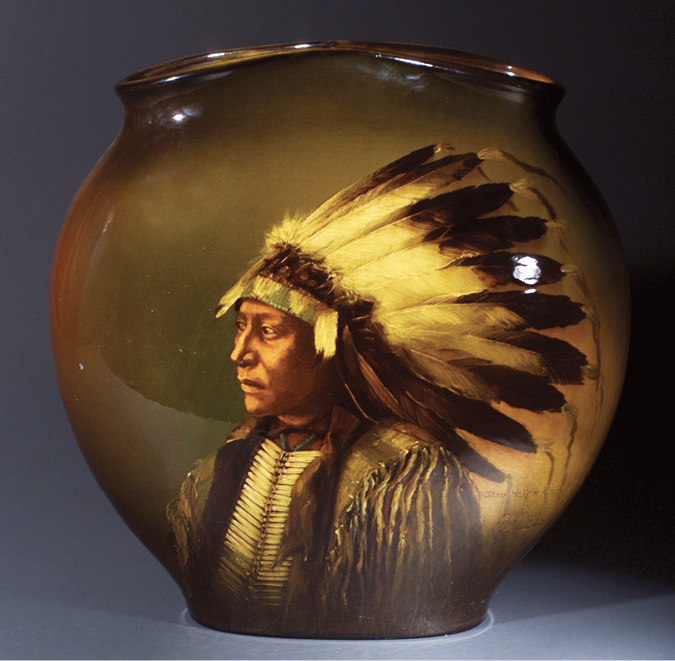
Rookwood, Chief Hollow Horn Bear, Sioux, 16" 15", 1900, standard glaze pillow vase by Matthew A. Daly, shows striking detail of a Native American Chief in full headdress and breast plate $76,375
It can take more than the naked eye and a strong light to detect some invisible repairs today and thats where the popular black light can help. Many spots of repair will fluoresce under the black light. Even a black light wont reveal everything which is why it is always recommended to do business with someone with a good reputation and who guarantees money-back satisfaction when making a major purchase.

